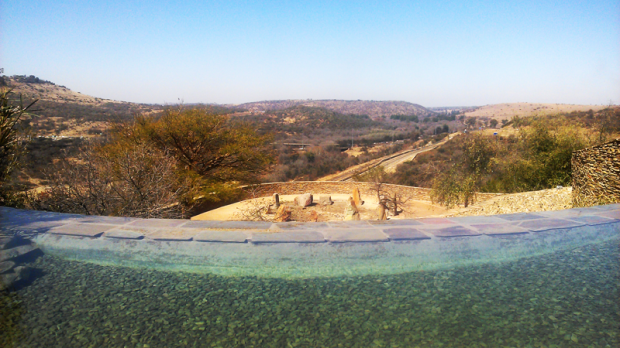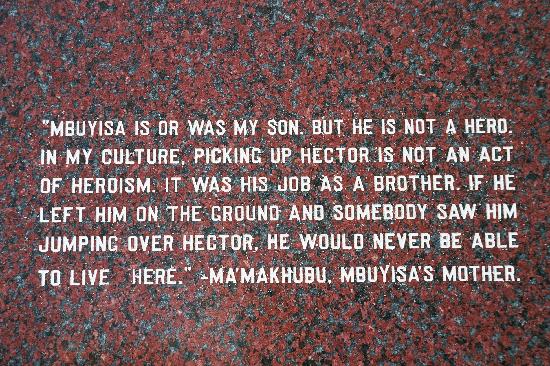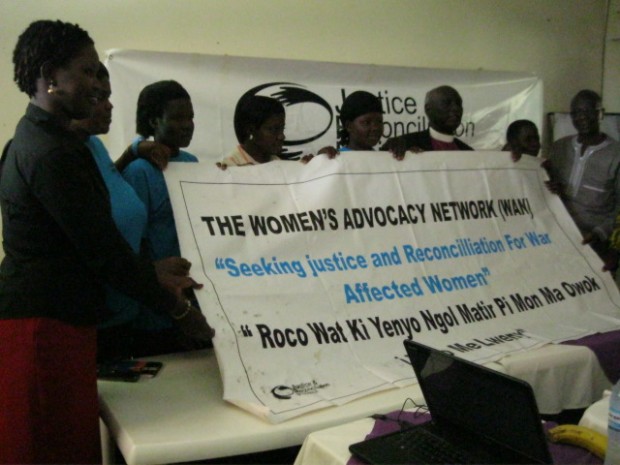
Welcome to Adjumani
A latrine is constructed from discarded United Nations Refugee Agency (UNHCR) sheeting. The white of it has gone gray, the blue is faded and the sheeting billows like a flag above the urine soaked ground. Dogs lie in the road so still they might be dead, unfazed even by the buzzing of flies. A boy hawks rolex, a Ugandan street food made of chapatti and fried egg, from a cloud of dust. The smells of oil and boiled goats’ meat hang in the air. The sun is unforgiving.
This is Dzaipi Sub-County, Adjumani District.
It is just thirty kilometers from Nimule, on the border with South Sudan, and has been buffeted by conflict on both sides of that border since the time of Ugandan dictator Idi Amin Dada. Following Amin’s reign of terror, the Lord’s Resistance Army (LRA) rose to power in Uganda, forcing many into internally displaced persons’ camps and others into the rebel army itself. Meanwhile, the second Sudanese civil war raged on nearby, ultimately claiming two million souls.
A state of relative peace has returned to Adjumani. The LRA left Uganda in 2006. The promise of amnesty for returned recruits, traditional justice practices, geopolitical dynamics and depleted resources forced them from the country. Still, the rebels remained active in South Sudan, Central African Republic and Democratic Republic of Congo (DRC). Attacks in the DRC have been reported as recently as October 2018, but these are nowhere near the scope and scale of previous brutalities.
South Sudan officially established its independence from Sudan in 2011, but conflict erupted two years later, when South Sudanese President Salva Kiir accused Vice President Riek Machar of attempting a coup. Fighting then broke out between the government army and rebel forces, with factions often divided along ethnic lines. Many fled in fear for their lives, making an equally terrifying journey to Uganda.
Henry Amadra, a South Sudanese refugee, recalls the perilous trip. At one point he and his family came to water, and were certain they might be thrown in if unable to explain themselves or bribe soldiers, so risky was movement between countries.

Kiir and Machar reached a shaky peace deal was reached in October 2018, but an endless flow of refugees continues to cross the border between South Sudan and Uganda, escaping ongoing violence and uncertainty in the world’s newest nation. The current conflict is estimated to have displaced millions and resulted in approximately 383,000 deaths.
A Land in Constant Conflict
The story of Adjumani, like so much of Northern Uganda, is a story of war. It is a story James Wani knows all too well. He is a tall and reedy man, with hunched shoulders and a shaved head. His eyes are gentle and his voice is slow and deep, the hard notes coming out only in certain moments.
James told his story from an un-mowed field near Dzaipi sub-county offices. Vehicles kicked up dirt on the road and elsewhere children laughed, then shrieked and began to cry. James first fled his home in fear of Idi Amin, and found himself in what is now South Sudan. He was a boy then and flight disrupted his education. It would not be the first time he was forced to run. As conflict between the Sudan Peoples’ Liberation Army (SPLA) and the Government intensified, James returned again to his home in Uganda. He found Joseph Kony and the LRA gaining power there, and he was once again in the center of a war zone.
James was abducted by the rebel army on three separate occasions. He does not give details, only the impression that fear and pain are routine emotions. War is over now and he still feels unsettled.

Betty Ottua has a similar tale; the only difference is that she was born in South Sudan, then called Sudan, and not in Uganda. Betty came of age in Nimule, South Sudan. As she grew clashes between the SPLA and government forces also worsened, and she made the journey to Uganda when she was ten years old. She lived in a settlement in Adjumani. Betty claims it was the subject of constant LRA raids, as rebels stole the already meager UNHCR rations given to refugees. She returned to South Sudan in her adulthood, but the LRA found her there as well.
Betty’s lips turn upwards in the ghost of a smile as she describes a vicious attack on a vehicle by the LRA in South Sudan. There were gunshots everywhere. Somehow, the bullets missed her. She became soaked in the blood of others. Afterwards, the soldiers checked for survivors. They never found her.
They poured gasoline and set the vehicle ablaze and this is when Betty escaped. As she moved away, she saw a mother and baby. The woman was badly injured and close to dying and it was impossible to save her and too dangerous to take the child. They burnt.
Betty returned to Nimule, but discord between Kiir and Machar worsened and conflict broke out once again. She remembers seeing someone she knew killed on a near daily basis. So, Betty escaped again to Uganda, displacement habitual.
These are just two voices in a chorus. There are countless experiences, just as brutal and simply untold.
Sarah Akumu is the community development officer for Dzaipi sub-county. She sees great similarities between the experiences of both Northern Ugandan conflict survivors and South Sudanese refugees. She spoke from her office, the midmorning sun already high and the heat intense. “This border of Sudan and Uganda is a porous border. We keep moving and we have relatives in these two countries,” she said. “What we went through, during the LRA activities, is more or less the same as what these people went through when they were forced to come here.”
In addition to similarities on both sides, covert border crossing were a routine part of the LRA insurgency, as the rebels established bases in South Sudan. They received support and a measure of security from the government of Sudan in Khartoum, allegedly in retaliation for Ugandan Government support of the SPLA.
Rebels and their captives spent significant time in jungles between South Sudan, the Democratic Republic of the Congo, Central African Republic and Northern Uganda, the lines of the map arbitrary. Michael Droma, who was abducted from his home in Adjumani, asserts that he became a soldier in South Sudan. There, he was taught to properly hold and shoot a gun. He claims that 2,136 other soldiers were trained alongside him.

Borders have shaped the African continent, and played a crucial role in war and strategy, and yet these borders seem near irrelevant to the human experience.
A Shared Past, A Shared Future
The future and needs of Ugandan locals and South Sudanese refugees have become increasingly and irrevocably linked. The transitional justice process in the larger West Nile region is shaped by the need to support refugees and conflict survivors simultaneously.
According to Michael Droma, Ugandans and South Sudanese are prepared to unite, based on the understanding created by shared experience. He believes that people from both nations “can join hands together.” In fact, Uganda is known for having one of the most welcoming refugee policies in the world, opening its doors to those fleeing neighboring countries.
While empathy for and the desire to support refugees is clear, the environment itself presents challenges. Northern Uganda remains in a delicate period of recovery. Competition for natural resources is also fierce. Many refugees complain of being chased away from the forest by the local community when they try to cut grasses to build thatched huts.
Angelina Awut Adung fled South Sudan with her children. They live do not have a proper house or access to a latrine. Her eyes brim with tears when she tells her story. She wipes them away on the corners of her shawl and presses onward. UNHCR has been able to meet the basic needs of refugees, providing food rations and housing, but few other resources. Angelina reported that she must sell these food rations in order to pay for clothes, and for school fees beyond primary school.

Locals, on the other hand, claim that the refugee camps are contributing to massive deforestation, affecting the livelihood of a population that primarily survives as peasant farmers. Some even blame the refugees for the drought currently depleting crop production, claiming that the refugee population has entered sacred lands and angered the community elders.
The Local Council Three of Dzaipi sub-county, Mr. Charles Anyanzo, spoke about the influx of refugees from a bar near town. The tin roof slanted downwards, and music speakers were stacked on top of dusty beer crates. Outside, men played checkers with bottle caps. Power had gone out, and he was forced to converse by the light of mobile phones.
Mr. Anyanzo claimed that a “severe war” could erupt if the refugees are not properly settled, with attention to the needs of the local population. He believes it is crucial for non-profits and local leaders to actively meet the needs of both communities, specifically encouraging active intervention on the part of non-profits to “reduce hunger” for Ugandans, and in doing so curtail resentment that they may feel towards outside populations, allowing both to live in harmony.
Still, a question lingers. How can a traumatized population, in need of support, realistically accommodate equally traumatized refugees? How can the needs of both groups be met simultaneously, especially when those needs are myriad?
Speaking from the Dzaipi sub-county offices, Rosemary Anzoo pulls up the sleeve of her shirt to reveal a scar there. It is shaped almost like a star and puckered up as a pair of lips might be. Rosemary was raped by eight men during LRA captivity and stabbed. She speaks of problems in her bones, and still awaits treatment.
She wears silver hoop earrings, a skirt made of traditional cloth and a shirt from Justice and Reconciliation Project (JRP) bearing the slogan, “Speak Up and Act, SGBV is Real.” She covers the wound again and continues speaking.
Like a question, the image remains.
Changing the Minds of a Nation
The Paramount Chief of the Madi People, Steven Izakare, opened the doors of his home to discuss these issues with JRP Staff.
On the surface, war and conflict have curtailed development throughout the West Nile. “West Nile and Acholi Sub-Region are great places that have been denied their opportunity to develop to their potential, because of the conflicts that have been raging on between the government and the so called rebel forces,” he said.
The issue, however, is deeper and more complex. According to His Highness Mr. Izakare, the war did not just impede development, but corroded the very mind of the nation. “A lot of minds were destroyed in the conflict. Many people who were good thinkers, the ones who could travel, met their demise on the road,” he said. “Finding a fresh mind that can separate between what has happened and what we need to be doing is very difficult.” He claims it is challenging to encourage people to look beyond the trauma of the past and towards the possibility of the future. Thus, programs must not only meet multiple needs, but uplift the very mind of a nation.
If this happens, Mr. Izakare is optimistic. He envisions many communities living side by side in the West Nile, and a more developed Uganda that still respects and acknowledges its traditional past. “I’d like to see a Uganda that is truly peaceful. Emotionally, physically, psychologically, peaceful and healthy, and then it will also become wealthy,” he said. “The nationals on the ground have everything it takes to be a success, to sit amongst their peers, and have the respect from peers.”
Suddenly, the clouds darken, threatening rain. He calls it a blessing. Wind whips through the grass and fat drops begin to fall, slowly and then all at once.
There is hope, even in the places that seem bleak. Beatrice Yangi fled to Uganda with her children. She still recalls the difficult conditions in the camp, such as an attack of cholera and watching the elderly die in a downpour. She currently resides in Pagirinya Refugee Camp and lacks many basic necessities, including a mattress or sheets on which to sleep. Despite all this, she prays each morning upon waking and each night before going to bed. She thanks God at least twice each day. “Nothing is difficult for God. God can make anything better, anytime,” Beatrice said.

The obstacles ahead are clear. Organizations must partner to meet the shared needs of multiple suffering populations, and do so in a way that also empowers people towards a better future, drawing a clear line between what has happened and what is to come. It is undoubtedly difficult, but if it is possible to speak openly no matter how painful and to pray each day in spite of an immediate reality, then perhaps real change is possible too.
***
Justice and Reconciliation Project remains committed to supporting the voices and needs of vulnerable populations throughout Northern Uganda. JRP has supported three Women’s Advocacy Network groups in Adjumani, providing income generating items and loan capitals.
This article is part of a larger series on the needs of communities in Adjumani.The project was made possible with the support of the Trust Africa Fund, with the goal of elevating forgotten voices and evaluating the success of existing programs. Interviews with from the project will also aid in the development of a best practices guide for supporting victims of sexual and gender based violence. This guide will be shared at an international exchange in Nigeria. The guide will also be circulated to researchers, practitioners and government officials to ensure effective response
Project Interviews were conducted by JRP Communications Intern Sophia Neiman and Research Assistant Benard Okot. Translation was provided by Emmanuel Anyovi.








